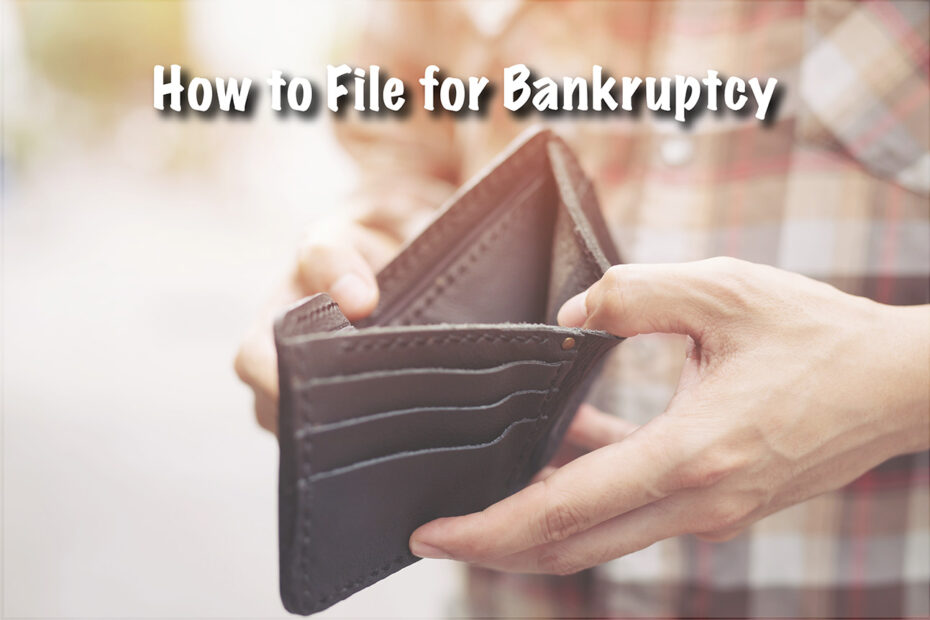How to File for Bankruptcy
Filing for bankruptcy can be a complex and daunting process. If you are struggling with overwhelming debt, bankruptcy may be a viable option to obtain a fresh financial start. In this article, we will discuss how to file for bankruptcy and the steps involved in the process.
Summary: To file for bankruptcy, you need to: determine which bankruptcy chapter to file under, gather all the required financial documents, fill out and file the bankruptcy forms, and attend a meeting of creditors, if applicable.
Determine Which Bankruptcy Chapter to File Under
There are two main types of bankruptcy for individuals: Chapter 7 and Chapter 13. Chapter 7 is also known as “liquidation bankruptcy” and involves the sale of non-exempt assets to repay creditors. Chapter 13 is a reorganization bankruptcy that allows you to keep your property and repay creditors through a court-approved repayment plan. It’s important to determine which chapter to file under based on your specific financial situation.
Read More: Escape the Debt Trap: A Comprehensive Guide to Chapter 7 Bankruptcy
Gather All Required Documents Before You File For Bankruptcy
To file for bankruptcy, you will need to gather all the necessary documents, including your financial statements, tax returns, pay stubs, and other financial documents. You will also need to complete a credit counseling course within six months before filing for bankruptcy.
Complete the Bankruptcy Forms
The next step is to complete the bankruptcy forms, which include the petition, schedules, and statements. These forms will ask for detailed information about your finances, including your income, expenses, debts, and assets. It’s crucial to complete these forms accurately and honestly.
Read More: How to File for Chapter 7 Bankruptcy
File the Bankruptcy Forms
Once the bankruptcy forms are completed, you can file them with the bankruptcy court in your area. You will also need to pay a filing fee. The amount you pay may be different depending on the type of bankruptcy you file and where you file it.
Attend the Meeting of Creditors
After you file for bankruptcy, you will be required to attend a meeting of creditors, also known as a 341 hearing. This is a meeting with the bankruptcy trustee and your creditors. The trustee will ask you questions about your financial situation and bankruptcy forms. This is to make sure the debtor knows about:
- What might happen if they file, like how it could affect their credit history;
- Whether they can file under a different chapter;
- What happens when they get their debts discharged through bankruptcy; and
- What happens if they reaffirm a debt.
A 341 hearing will not be necessary if the debtor has already created a plan for how they will pay back their debts and asked for approval before the bankruptcy case started. Someone involved in the bankruptcy case would still have to ask the court that there not be a meeting of the creditors.
You can find this portion of the law in the Bankruptcy Code at 11 U.S.C. § 341 (e).
Complete Any Additional Requirements
Depending on your specific state, you may need to complete additional requirements, such as a financial management course or other court-mandated activities.
Receive Your Bankruptcy Discharge
If your bankruptcy case is successful, you will receive a bankruptcy discharge, which means that you are no longer responsible for repaying all or most debts that were included in your bankruptcy case. The discharge is a court order that prohibits creditors from taking any collection action against you for the discharged debts.
Conclusion
Filing for bankruptcy can be a complex process, but understanding how to file can help you navigate the process with confidence. Remember to consult with a bankruptcy attorney or credit counselor before filing and gather all necessary documents to ensure that your bankruptcy case is successful.
